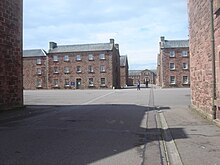
Jacobitism was a political ideology advocating the restoration of the Catholic House of Stuart to the British throne. When James II of England chose exile after the November 1688 Glorious Revolution, the Parliament of England ruled he had "abandoned" the English throne, which was given to his Protestant daughter Mary II of England, and her husband William III. On the same basis, in April the Scottish Convention awarded Mary and William the throne of Scotland.

The Battle of Culloden took place on 16 April 1746, near Inverness in the Scottish Highlands. A Jacobite army under Charles Edward Stuart was decisively defeated by a British government force commanded by the Duke of Cumberland, thereby ending the Jacobite rising of 1745.

The Battle of Prestonpans, also known as the Battle of Gladsmuir, was fought on 21 September 1745, near Prestonpans, in East Lothian, the first significant engagement of the Jacobite rising of 1745.

Glenfinnan is a hamlet in Lochaber area of the Highlands of Scotland. In 1745 the Jacobite rising began here when Prince Charles Edward Stuart raised his standard on the shores of Loch Shiel. Seventy years later, the 18 m (60 ft) Glenfinnan Monument, at the head of the loch, was erected to commemorate the historic event.

Culloden is a 1964 docudrama written and directed by Peter Watkins for BBC TV. It depicts the 1746 Battle of Culloden, the final engagement of the Jacobite rising of 1745 which saw the Jacobite Army be decisively defeated by government troops and in the words of the narrator "tore apart forever the clan system of the Scottish Highlands." Described in its opening credits as "an account of one of the most mishandled and brutal battles ever fought in Britain," Culloden was hailed as a breakthrough for its presentation of a historical event in the style of modern TV war reporting, as well as its use of non-professional actors. The film was based on John Prebble's study of the battle.

The Jacobite succession is the line through which Jacobites believed that the crowns of England, Scotland, and Ireland should have descended, applying male preference primogeniture, since the deposition of James II and VII in 1688 and his death in 1701. It is in opposition to the legal line of succession to the British throne since that time.

Clan Grant is a Highland Scottish clan, with one main branch, Grant of Grant, and several cadet branches, such as Grant of Glenmoriston.
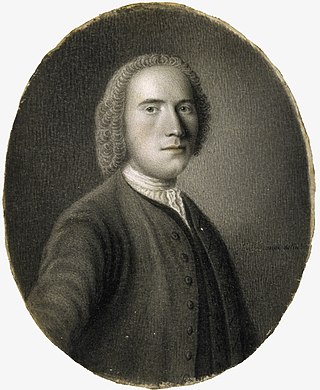
Lord George Murray, sixth son of John Murray, 1st Duke of Atholl, was a Scottish nobleman and soldier who took part in the Jacobite rebellions of 1715 and 1719 and played a senior role in that of 1745.

Croy is a village between Inverness and Nairn, in the Highland council area in Scotland. The village looks over the Moray Firth and is located a few miles from Inverness Airport. The estimated population of the village is 498 according to the adjusted 2011 census.
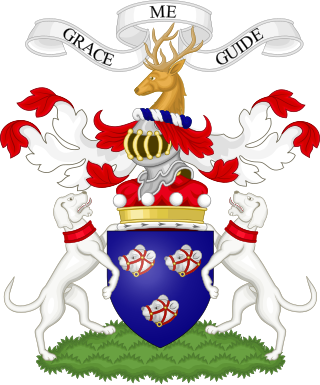
Clan Forbes is a Highland Scottish clan from Aberdeenshire, Scotland.

The Battle of Littleferry took place during the Jacobite rising in 1746, just before the Battle of Culloden. Scottish forces loyal to the British-Hanoverian Government defeated a Scottish Jacobite force.

The Jacobite rising of 1745 was an attempt by Charles Edward Stuart to regain the British throne for his father, James Francis Edward Stuart. It took place during the War of the Austrian Succession, when the bulk of the British Army was fighting in mainland Europe, and proved to be the last in a series of revolts that began in March 1689, with major outbreaks in 1715 and 1719.
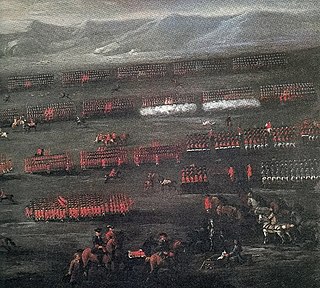
The Jacobite rising of 1715 was the attempt by James Edward Stuart to regain the thrones of England, Ireland and Scotland for the exiled Stuarts.

Sir John William O'Sullivan was an Irish professional soldier, who spent most of his career in the service of France, but is best known for his involvement in the Jacobite rising of 1745, an attempt to regain the British throne for the exiled House of Stuart. During the Rising, he acted as adjutant general and quartermaster general of the Jacobite army and had a major influence on the campaign.
Bob Carruthers is a Scottish filmmaker, author and broadcaster.

Murray G. H. Pittock MAE FRSE is a Scottish historian, Bradley Professor of Literature at the University of Glasgow and Pro Vice Principal at the University, where he has served in senior roles including Dean and Vice Principal since 2008. He led for the University on the University/City of Glasgow/National Library of Scotland Kelvin Hall development (kelvinhall.org.uk), and has chaired Glasgow's unique early career development programme, which has been highly influential in the sector, since 2016. He has also acted as lead or co-lead for a range of national and International partnerships, including with the Smithsonian Institution, and plays a leading role in the University's engagement with government and the cultural and creative industries (CCIs), organizing the 'Glasgow and Dublin: Creative Cities' summit in the British Embassy in Dublin in 2019, and working with the European network CIVIS on the creation of a European policy document on universities and civic engagement, on which he gave a masterclass for La Sapienza University He also produced a major report on the impact of Robert Burns on the Scottish Economy for the Scottish Government in 2020; a Parliamentary debate was held at Holyrood on the recommendations, which have been cited in policy debate many times since. In 2022, he was declared Scotland's Knowledge Exchange Champion of the year. Outside the University, he served on the Research Excellence Framework (REF) Institutional Environment Pilot Panel in 2018-22, and on the National Trust for Scotland Board (2019-27) and Investment Committee, as well as acting as Co-chair of the Scottish Arts and Humanities Alliance (SAHA) and chair of the Governance Board of the Scottish Council on Global Affairs. He also serves as Scottish History Adviser to the NTS and as an adviser to a wide range of other national heritage bodies and the Scottish Parliament; recently he has provided expert advice to both the Scottish and British parliaments on promoting Scotland abroad, and serves on the Scottish Government's Scottish Connections Advisory Panel on the diaspora. He is on the Advisory Board of NISE, the Europe-wide research group bringing together over 40 research centres working on national identities and was President of the Edinburgh Walter Scott Club in 2019-20 and 2021-22. He has given a number of major lectures, most recently the Magnusson, MacCormack and Caledonian lectures
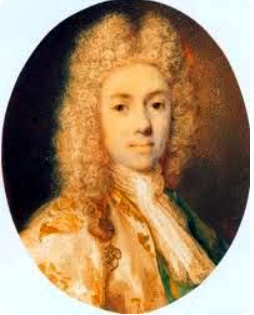
William Murray, Marquess of Tullibardine was a Scottish nobleman and Jacobite who took part in the rebellions of 1715, 1719, and 1745.
Events from the year 1745 in Scotland.
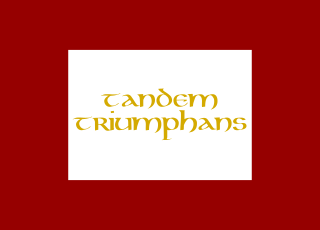
The Jacobite Army, sometimes referred to as the Highland Army, was the military force assembled by Charles Edward Stuart and his Jacobite supporters during the 1745 Rising that attempted to restore the House of Stuart to the British throne.

An Incident in the Rebellion of 1745 is an oil painting painted by Swiss-born artist David Morier sometime between 1746 and 1765. It is currently part of the art collection of the British royal family. The painting depicts a scene during the 1746 Battle of Culloden, in which a group of Jacobite Army troops charge against a line of government soldiers.


